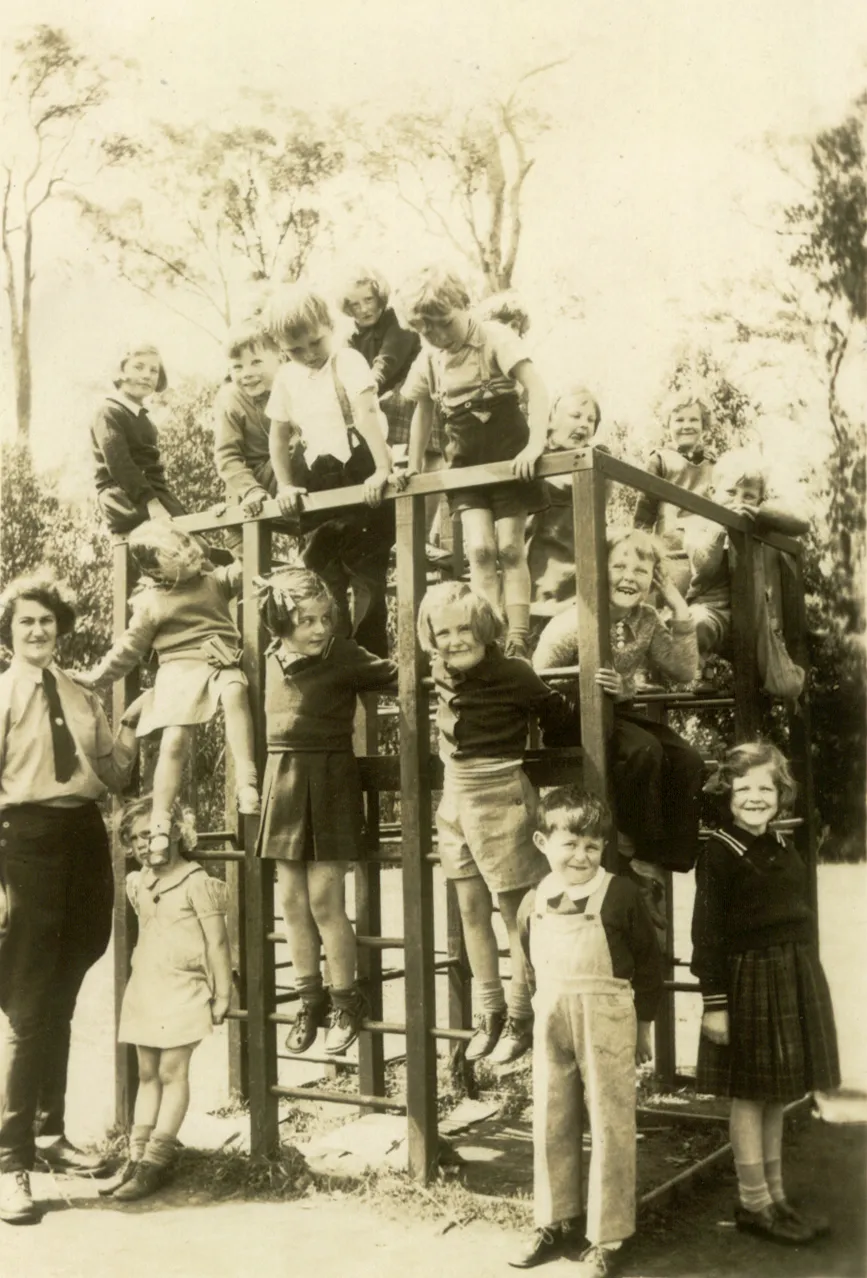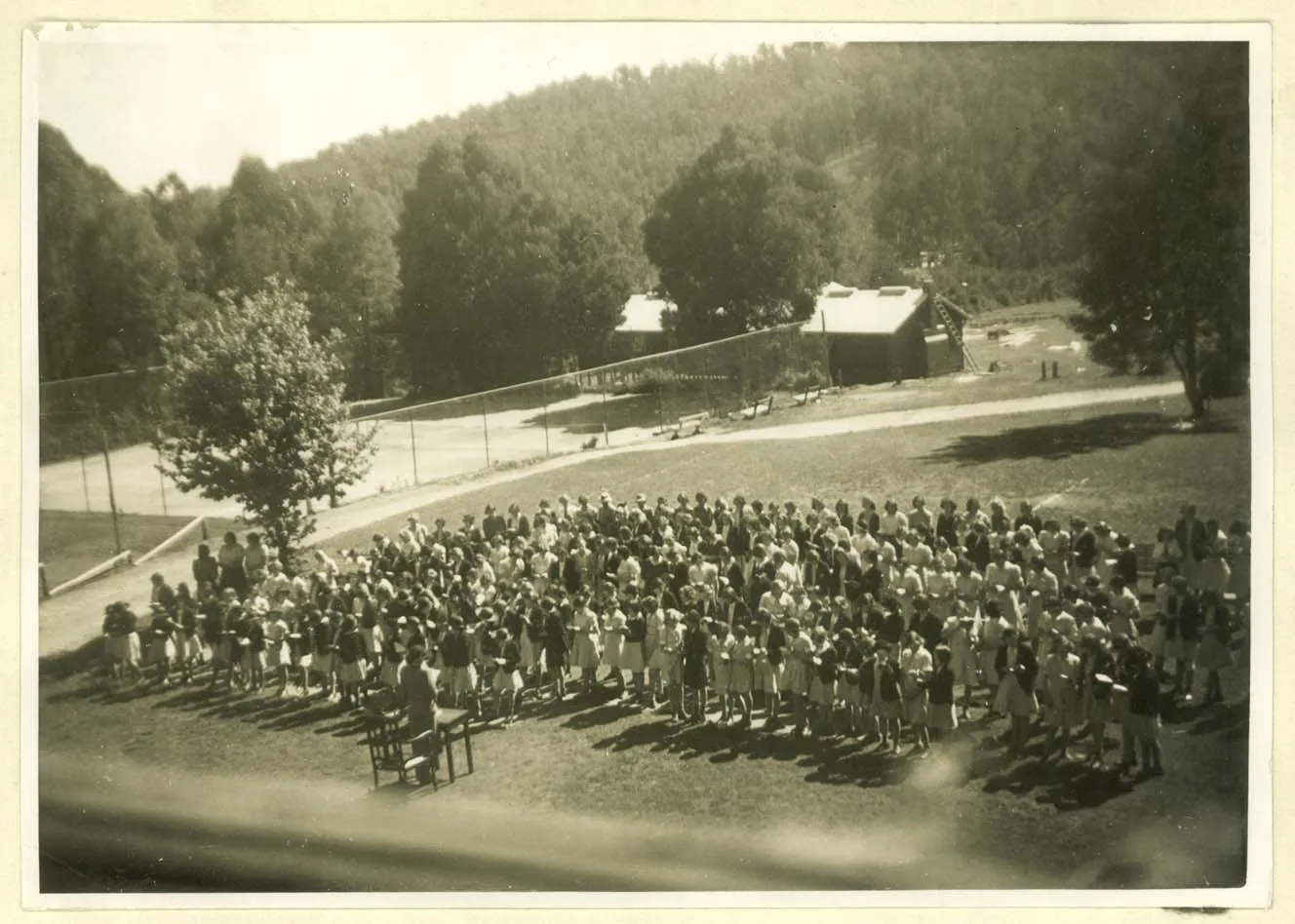

Outdoor lessons in Marysville, 1943


Outdoor lessons in Marysville, 1943
Resilience in our History
In times that test us, we learn what’s important, what’s worth returning to, and what we can live without.
The importance of taking what we’ve learnt into our everyday lives is crucial in order to grow from the experience and reflect on it. Every crisis seems like an unprecedented change when you’re in it – and that is what we are feeling now. But in times past, Melbourne Girls Grammar students have been a part of times of total change.
What we can learn from our shared history is that while we navigate the unknown, it will pass and life will resume.
Our students have faced health crises before and indeed ones that impinged more severely on their age group. Diphtheria, scarlet fever, measles and whooping cough were all serious illnesses for children. Influenza, specifically the Spanish flu of 1919-1920, was a worldwide illness which affected millions of people. Polio, which, for a period of twenty years from 1930 – 1950 came in waves, infecting children in particular, and often without warning.
So how did our girls react to these crises? We can get glimpses of their attitudes through some school magazine contributions and later recollections, and as you would expect, there was frustration with school closures but humour, resilience and a joy in returning.

Freda Last who was 15 in 1919 remembered the return to school after a significant school closure. “The Spanish Influenza was serious and severe. Everybody was glad to be back at school and relieved to see people going about normally without ridiculous masks.” Adeline Cunningham who was in Year 12 in 1919 wrote, “Some parents were very frightened to send their children back to school after the influenza epidemic, but the thought of seeing many familiar faces once again after being 'caged' up made the girls feel very happy.“
One of the worst polio outbreaks was in 1949 when school was cancelled for some time. Margaret Pizzey and Jill Ross recalled it as a time when they “were kept home and had a marvellous time doing lessons in each other’s houses.” The School Magazine that year read as a series of cancelled events – no excursions, school dances, no inter-school sport matches or debates, no musical assemblies and no concert. Despite this, there was always the optimism of an eventual return to normality.
Freda Last who was 15 in 1919 remembered the return to school after a significant school closure. “The Spanish Influenza was serious and severe. Everybody was glad to be back at school and relieved to see people going about normally without ridiculous masks.” Adeline Cunningham who was in Year 12 in 1919 wrote, “Some parents were very frightened to send their children back to school after the influenza epidemic, but the thought of seeing many familiar faces once again after being 'caged' up made the girls feel very happy.“
One of the worst polio outbreaks was in 1949 when school was cancelled for some time. Margaret Pizzey and Jill Ross recalled it as a time when they “were kept home and had a marvellous time doing lessons in each other’s houses.” The School Magazine that year read as a series of cancelled events – no excursions, school dances, no inter-school sport matches or debates, no musical assemblies and no concert. Despite this, there was always the optimism of an eventual return to normality.
Freda Last who was 15 in 1919 remembered the return to school after a significant school closure. “The Spanish Influenza was serious and severe. Everybody was glad to be back at school and relieved to see people going about normally without ridiculous masks.” Adeline Cunningham who was in Year 12 in 1919 wrote, “Some parents were very frightened to send their children back to school after the influenza epidemic, but the thought of seeing many familiar faces once again after being 'caged' up made the girls feel very happy.“
One of the worst polio outbreaks was in 1949 when school was cancelled for some time. Margaret Pizzey and Jill Ross recalled it as a time when they “were kept home and had a marvellous time doing lessons in each other’s houses.” The School Magazine that year read as a series of cancelled events – no excursions, school dances, no inter-school sport matches or debates, no musical assemblies and no concert. Despite this, there was always the optimism of an eventual return to normality.




Mary Duffield, Margaret Sanders and her sister Jenny on the right



Mary Duffield, Margaret Sanders and her sister Jenny on the right


Teacher Alison Winfield and some of the Mt Kitchener children on the jungle gym brought from South Yarra

Crisis of a Different Kind
In 1942 during World War 2, there was a crisis of a different kind. The entire school was evacuated as the Air Force took over the School until 1944 and all girls from kindergarten to Year 9 became boarders in the country at Marysville, while the senior girls trekked every day to the apple orchards of Doncaster. In the coldest winter on record in Marysville, the girls, especially former day girls, had to adjust to a very different school life and way of living.
Classrooms were in many unusual places – the empty swimming pool was a favourite because it was sheltered from the wind and relatively warm. The girls loved living amongst the mountains with many hikes and outdoor activities.
They rejoiced that school uniform, deemed not warm enough, was only to be worn on Sundays. Memorably, the girls loved the freezing cold day when their maths class turned into a run around the streets of Marysville.
There was a resilience about these students, and what could have been a very negative time was in fact viewed positively. Jenny Bourke (Sanders), who was 8 years old when she went to Marysville, expressed the feelings of many. “Lifelong friendship and the importance of such friends in my life was my legacy. I acquired a certain independence as we learnt to look after ourselves and our fellow boarders and our bush walks fostered a love of the Australian native environment.”
Crisis of a Different Kind
In 1942 during World War 2, there was a crisis of a different kind. The entire school was evacuated as the Air Force took over the School until 1944 and all girls from kindergarten to Year 9 became boarders in the country at Marysville, while the senior girls trekked every day to the apple orchards of Doncaster. In the coldest winter on record in Marysville, the girls, especially former day girls, had to adjust to a very different school life and way of living.
Classrooms were in many unusual places – the empty swimming pool was a favourite because it was sheltered from the wind and relatively warm. The girls loved living amongst the mountains with many hikes and outdoor activities.
They rejoiced that school uniform, deemed not warm enough, was only to be worn on Sundays. Memorably, the girls loved the freezing cold day when their maths class turned into a run around the streets of Marysville.
There was a resilience about these students, and what could have been a very negative time was in fact viewed positively. Jenny Bourke (Sanders), who was 8 years old when she went to Marysville, expressed the feelings of many. “Lifelong friendship and the importance of such friends in my life was my legacy. I acquired a certain independence as we learnt to look after ourselves and our fellow boarders and our bush walks fostered a love of the Australian native environment.”


Assembly at Marysville, 1944



Assembly at Marysville, 1944


Assembly at Marysville, 1944
What do all these crises have in common? Our students found ways to endure the difficulties, to be creative in making the best of the situation and to find humour and enjoyment as much as possible. Ultimately, they emerged each time relishing the return to School and friends and, in many ways, they were stronger as a result of the experience.
What do all these crises have in common? Our students found ways to endure the difficulties, to be creative in making the best of the situation and to find humour and enjoyment as much as possible. Ultimately, they emerged each time relishing the return to School and friends and, in many ways, they were stronger as a result of the experience.
What do all these crises have in common? Our students found ways to endure the difficulties, to be creative in making the best of the situation and to find humour and enjoyment as much as possible. Ultimately, they emerged each time relishing the return to School and friends and, in many ways, they were stronger as a result of the experience.




















